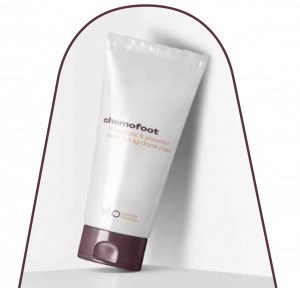 Definition: Hand-foot skin reaction (HFSR) refers to symptoms affecting the hands and/or feet associated with multikinase inhibitors.
Definition: Hand-foot skin reaction (HFSR) refers to symptoms affecting the hands and/or feet associated with multikinase inhibitors.
Hand-foot skin reaction is distinct from the hand-foot syndrome (HFS). HFS, also known as palmar-plantar erythrodysesthesia, is associated with chemotherapy agents such as 5-fluorouracil and capecitabine. HFS presents with diffuse painful oedema and redness of palms and soles. Whereas HFSR is dose-dependent and characteristically localizes to areas of pressure or friction on the skin, such as on the heels, metatarsal heads, and areas of friction caused by shoes or manual labour. Lesions are sharply demarcated, erythematous, oedematous, painful and very tender blisters that evolve into inflamed and painful calluses.
Incidence: Apart from imatinib, dasatinib, pazopanib and midostaurin, in which the frequency cannot be estimated on currently available data, HFSR is reported with an incidence of between ≥1% to approximately 50% of all patients treated with multikinase inhibitors, depending on the particular drug and tumour type.
Pathological features: Include epidermal keratinocyte apoptosis, dyskeratosis and vacuolar degeneration with intraepidermal blister formation followed by massive acanthosis, papillomatosis and parakeratotic hyperkeratosis.
Onset: Initial symptoms of HFSR (often a mild-to-moderate cutaneous reaction) with multikinase inhibitors typically appear within the first 2–6 weeks of treatment and include tenderness, paresthesia, dysesthesia, intolerance to contact with hot object. Several weeks after initial symptoms, blisters followed by thickened or hyperkeratotic skin may appear on frictional or weight-bearing areas of the skin, which are often painful and impair range of motion, and function, and weight bearing.
Resolution: Symptoms of HFSR may diminish as treatment continues and usually it can be successfully controlled with appropriate management.
What is CHEMOFOOT® for therapy of Hand Foot Syndrome used for?
Cream for therapy of Hand Foot Syndrome is a medical device in form of cream, rich in ingredients which form on skin moisturising-lubricating protective barrier. Created film, eases course of dermatological side effects of chemotherapy. The cream should be used as support for main oncological therapy (chemotherapy).
Cream for therapy of Hand Foot Syndrome contains urea in the form of hydroxyethyl urea, which intensely moisturises and softens irritated skin. Additionally contained in the product substances like Omega Plus (oil complex of 5 ingredients: olive oil, sunflower oil, corn oil, sesame oil and macadamia oil), Shea butter, silk proteins or Syricalm (complex of extracts from Phragmites kharka and Poria cocos), which lubricate and moisturise skin, so that ensuring protective barrier from harmful external factors. They also create proper environment for natural regenerating processes. Proper moisturizing and lubrication of the skin, decreasing symptoms of itching, burning and tightness.
The medical device was created in collaboration with oncologists, for special needs of patients undergoing cancer therapy.
Indications:
- Complications of chemotherapy (HFSR – HFS).
- Moisturizing and softening of irritated skin.
- Creating proper environment for natural regenerating processes.
- Decreasing symptoms of itching, burning and tightness.
Active ingredients’ properties:
- Urea – attracts and retains water.
- Omega Plus – a complex of vegetable oils, which supports the regeneration and increases the barrier of the epidermis (protects against water loss), improves skin elasticity.
- Soybean oil – increases the skin barrier function.
- Shea Butter – moisturises and oils the skin.
- Silk proteins – contains fibroin and sericin proteins. Fibroin prevents from dry skin without irritating side effects. Sericin improves the epidermal barrier, reducing water loss through the skin.
- SyriCalm™ CLR – an antipruritic substance, soothing and restoring the skin’s protective function.
